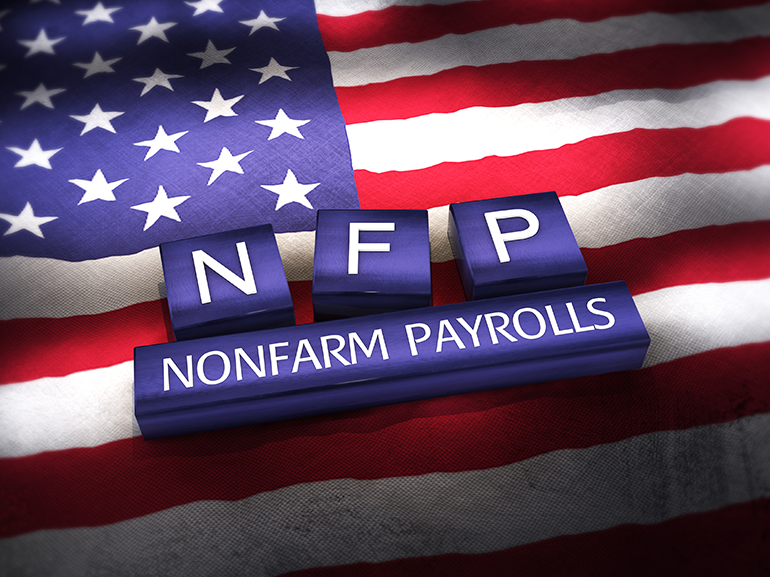What Are Nonfarm Payrolls?
Nonfarm Payrolls (NFPs) are among some of the most important and anticipated economic indicators in the US along with the CPI, GDP, and PMI. This index can reveal a lot about the state of the world’s biggest economy, which, in turn, can have direct effects on the global economy too. But what are NFPs exactly, what do they measure, and how do they affect the markets?

What Is NFP?
Each month, on the first Friday after collecting data, the Bureau of Labor and Statistics releases the NFP report. The Nonfarm Payroll, otherwise known as NFP, is a survey-based report that measures the number of employees in the US. The report gauges the number of US workers from various sectors, excluding those who are employed by farming, private households, proprietors, non-profits, and military personnel.
In addition, the Bureau of Labor and Statistics has revealed that the employees included in this report comprise about 80% of the US businesses which contribute to the total US GDP rate. Accordingly, traders and investors can refer to this economic indicator to gauge the trajectory of the US economy, in particular, and the global economy, in general.
Why Is the Nonfarm Payroll Report Important?
In addition to providing traders, investors, and analysts with data that reflects the health of the US economy, the NFPs are important because they can have a direct effect on the markets and central banks’ decisions, like the Federal Reserve. For example, good NFPs numbers that indicate higher employment rates can affect the Fed’s interest rates decisions and can cause a bullish rise in the overall markets and vice-versa.
Nonetheless, it is important to keep in mind that high employment rates do not always mean a healthy economy due to the fact that if employment rates grow exponentially fast, then this can lead to high inflation. As such, high NFPs can cause the Fed to raise interest rates in order to tame inflation while lower NFPs can cause the Fed to take a more dovish stance.
Moreover, NFPs can be used to pinpoint the most successful and healthy business sectors. Accordingly, if for example, the NFPs show a decline in employment in the tech sector, then traders can use this to understand that this sector is underperforming when compared to others tracked on the NFP report. (Source:Investopedia)
What Time is the NFP Released?
The NFPs are published on the first Friday of every month by the US Bureau of Labor and Statistics at 8:30 a.m. ET.
Which Forex Pairs Are Most Affected by the NFPs?
In addition to having an effect on the overall markets, the NFPs can have a direct impact on Forex currency pairs, especially though pegged with the US dollar. Since the NFPs reflect the health of the employment sector in the US, they can directly affect the Federal Reserve’s interest rates decisions in that higher employment rates can prompt the Fed to increase interest rates. This, as a result, can increase the US dollar’s strength and create volatility in the Forex market. On the other hand, lower employment rates can indicate a deteriorating economy, which can take away from the US dollar’s traction making it less attractive to traders and investors.
Accordingly, some of the Forex pairs most susceptible to change due to NFPs data are the EUR/USD (EURUSD), AUD/USD (AUDUSD), USD/JPY (USDJPY), GBP/USD (GPBUSD). However, while the biggest effects can be on USD-related pairs, the data can shift the trajectory of other pairs.
Furthermore, NFPs can impact other market assets besides Forex. As such, while high employment rates can strengthen the Forex market, they can simultaneously decrease the value of US indices like the S&P500 (USA 500) and the Nasdaq (US-TECH 100). As for commodities, in case of weak NFPs which indicate poor economic performance, then traders may opt to invest in safe-haven assets like Gold (XAU), which can bring some commodities’ prices up.
How to Trade the Nonfarm Payrolls (NFPs)?
While there is no right or wrong way to integrate Nonfarm Payrolls (NFPs) in your trading given the fact that NFPs require examining complex data, the most common ways to go about this include understanding how the NFPs work and what their components are, knowing when they are released, analyzing the data and trading accordingly, and using risk management tools to protect yourself from volatility.
What Are the Components of Nonfarm Payrolls?
A crucial part of understanding the NFPs includes knowing the breakdown of their components. NFPs include the US’ overall employment rate, the average hourly wages of labor force members, a detailed rate of increase or decrease for specific employment sectors, and revisions of past NFP reports.
Upcoming 2023 NFP Releases
Some of 2023’s upcoming NFP releases include the following dates:
April 7th
May 5th
June 7th
July 7th
August 4th
September 1st
October 6th
November 3rd
December 1st
All in all, the NFPs are definitely economic indicators every trader, investor, analyst, and market watcher should keep in mind when attempting to understand the health of the economy better as they can have direct effects on the markets.
